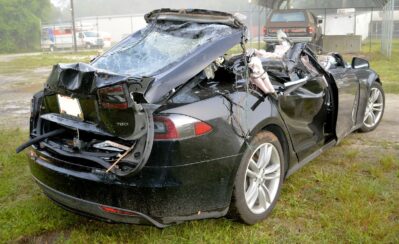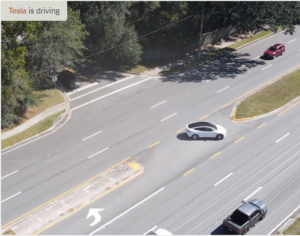Tesla to Face Jury Trial over Autopilot Defects Following 70-Page Summary Judgment Opinion
Tesla’s “Autopilot” has been implicated in over a dozen deaths in the U.S. alone, and yet the company has yet to face a significant finding of liability in a litigated case. That may end soon, as trial is set to begin in federal court today following a blockbuster summary judgment opinion issued only a few weeks ago.
Benavides v. Tesla involves a crash that occurred on a two-lane county road in Key Largo, Florida in 2019. George McGee was driving his Tesla Model S from his office in Boca Raton to his home, a distance of around 100 miles, when he ran through a stop sign at a T-intersection and collided with a Chevy Tahoe that was parked on the far side of the road at around 60 miles per hour. Naibel Benavides, a 22-year-old college student, was standing next to the Tahoe and was killed. Her friend Dillon Angulo—the two were on a date—was severely injured and is also a plaintiff in the case.
The Benavides crash implicates many of the same issues raised by other fatal crashes involving Autopilot. The system, despite its name, is a “driver assistance system” that requires constant oversight by an attentive driver, far short of what most people think of when they imagine an autonomous vehicle. Nor is it capable of functioning in any environment; the instructions explicitly warn drivers not to use it on anything less than a divided, limited-access highway, one without stop signs or crossing traffic.
Because of these limitations, every fatal Autopilot crash has involved a distracted driver. In the Huang case, for example, the plaintiff was killed when his car collided with a concrete barrier on the highway while he played a game on his phone (that case was settled for an undisclosed sum on the eve of trial). The Benavides crash is no different: McGee, the driver, testified in his deposition that he was on the phone with American Airlines trying to book a flight across the country when he dropped his phone and bent down to the floor to pick it up. It was at that moment that he sped through the stop sign and into the parked Chevy. (Benavides filed suit against McGee as well; that suit was settled for an undisclosed sum). McGee also used Autopilot on an inappropriate road, manually accelerated to a speed of 62 miles per hour in an area where the speed limit was 45, and repeatedly triggered Autopilot’s warning system for driver inattention.
Unsurprisingly given the facts outlined above, Tesla’s strategy in these cases has been to cast blame on the driver. At times this has been successful. The first trial involving a fatal crash linked to Autopilot involved a plaintiff-driver who had been drinking, and the jury had no trouble concluding that Tesla bore no blame for the accident. In Benavides, for the first time, the victim is a third party. Still, Tesla argued, it was the driver who was to blame for the crash, not Autopilot.



 This week the New York Times
This week the New York Times